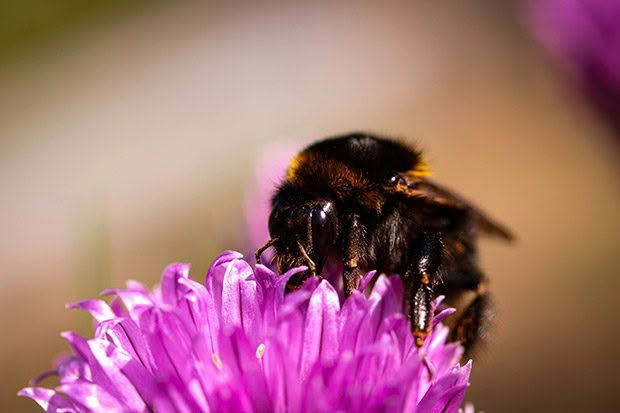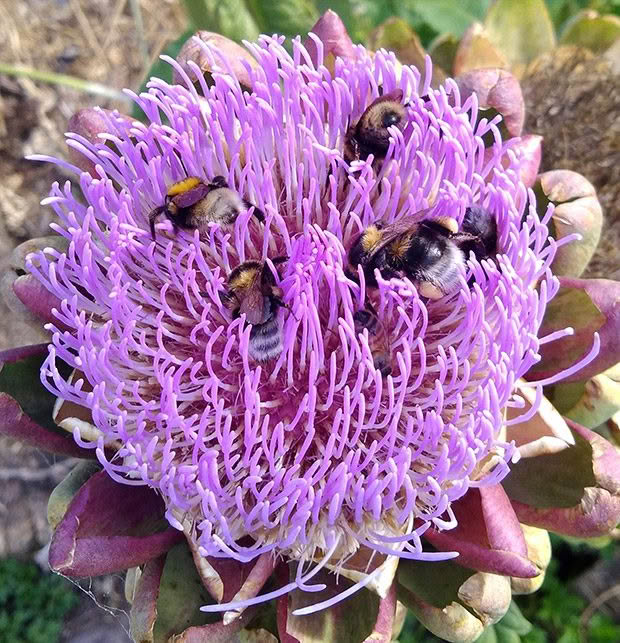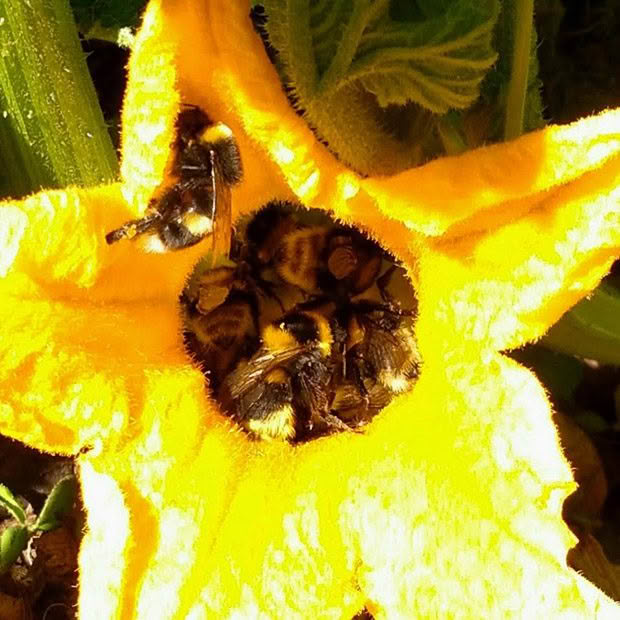Rebecca Stewart: The flight of the bumblebee
The humble bumble is an adored (and necessary) friend in Rebecca’s garden.
Photos: Summer Stewart
There are many creatures in our slightly wild garden. Its tangled collection of herbs, veggies, fruit trees and berries provides a wonderful habitat for all kinds of life. The californian quails certainly seem to think so as they scurry through the undergrowth or run along the tree branches.
The quirky little quail rooster calls from the top of a lichened fence post, his beady eyes scanning the environment for slinking cats. We lost a lot of berries to these pesky-but-cute little birds last year, but the garden has grown a lot since then. Our theory is to overwhelm all the birds with excess food — for both us and them. It’s working so far with the strawberries bursting into full-scale production.
The great thing about most varieties of berry plants is how easy they are to propagate. Under the blueberries we’ve planted a ground cover of strawberries, both the typical red fruiters and a wilding tasty white alpine. A walk around the garden yields a big bowlful of these delicious berries.

The raspberries are also spreading. We are fortunate to have the room for their natural forest edge creeping inclinations to be of benefit. Last year, as we sat on the deck, we watched the cheeky quails and thrushes eyeing the drooping raspberry canes in search of the redness of ripening fruit. A quick flutter and leap, canes shaking in evidence of a criminal act, and one less tasty morsel for us.
Across the ravine the wildness thrives, with bush leading down to the rugged farmland.
Grazed only by feral goats and deer, the bee farmers are needing wildflowers in the bush and pasture to feed their bees. This means a thriving bee population for us as our property stands out in the rugged valley for its rambling collection of flowering plants. The hum from the trees in bloom is loud; the garden is a hive of activity.

But it is not the honeybee which is our favourite garden critter. It is the bumblebee.
These furry, bumbling insects steal the show every time. They hang from the flowers, weighing down the narrow stems, squeeze their plump bodies into the narrow throats of the blooms and emerge dusted in pollen. From their chaotic aerial escapades, I can see where Nikolai Rimsky-Korsakov got his inspiration for the famous orchestral interlude ‘Flight of the Bumblebee’.
We dodge the busy, bustling beasts and gently brush aside the buzzing flowers as we go about our business in the garden. We marvel at the contrast of the furry black and yellow bodies amongst the vivid purple of the globe-artichoke blooms. And laugh as they attempt the ‘how many bumblebees can you fit in a courgette flower?’ game.

From the cute little newly hatched bumbles to the giant matriarchs, they all have a place in our hearts. We save them from the garden nets, the cobwebs on the deck and from drowning and palace their cold wet bodies in the sun to dry out if we find them floundering. Blue barrels and blue buckets are the most dangerous for bumblebees as the colour draws them in. We have stopped using blue coloured buckets for water.
I have only been bitten or stung once by a bumblebee. Yes, it hurt but only for a short time, unlike throbbing ache or itchy horribleness left by the honeybee stings. But the true blessing of the bumblebee is that, unlike the honeybee, they will carry out their pollination work on cold, misty and rainy days.

Living in the Ruapehu district we have many of these days; times when the cloud hangs low and lies damp across the land. These fat fluff bundles are the main pollinators of our early spring blossoms, doing their part to ensure a bountiful harvest. Their presence in the garden is both a joy and necessity.
So, while honeybees might provide us with the sweet nectar of their work, it is the humble bumblebee which will always capture our heart.
ABOUT REBECCA
In 2020, Rebecca and David Stewart subdivided and sold their block in a tiny Manawatu village in order to create a more self-sufficient way of life. Choosing to buy 6ha (14.8 acres) of land, most of it in pines in a remote corner of King Country, meant no mortgage and treasured financial independence. The distance doesn’t stop Rebecca from running the increasingly popular Homesteading New Zealand group on Facebook. She also posts regular updates on their farm’s transformation to its own page, Fodder Farm. Read more about their journey here, and visit thisnzlife.co.nz every month for the latest from their slice of New Zealand.

